You have browsed through your fabric paint collection, but you don’t have the color that you have in mind for your crafts project. Before buying new paint, check whether you have the desired color in acrylic paint. If you do, you can easily convert it to fabric paint using an appropriate fabric medium.
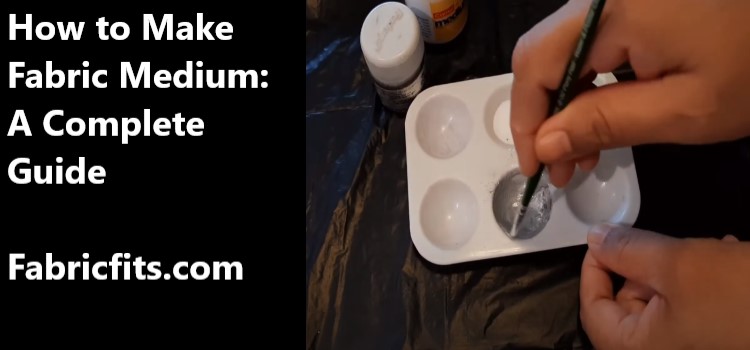
You can make fabric medium by mixing vinegar, water, and glycerine. The mixture is a liquid agent that can transform acrylic paint into fabric paint. Fabric medium makes acrylic paints thinner and allows for a smoother finish. That’s what you need for fabric application.
You can find many commercial fabric mediums in stores, most of which work just as fine as homemade ones. But, if you don’t want to spend money on store-bought fabric mediums, you can whip up your own using everyday kitchen supplies. I will show you how to do that and discuss some fabric medium alternatives.
Table of Contents
- What Is Fabric Medium?
- What Is The Best Fabric Medium?
- Where To Buy Fabric Medium?
- Fabric Medium Substitute
- Can You Use Fabric Softener Instead of Fabric Medium?
- Can I Use A Pouring Medium Instead Of A Fabric Medium?
- How To Make Fabric Medium?
- How To Make Fabric Medium Without Glycerine
- DIY Fabric Medium For Latex
- How To Use Fabric Medium: Step-by-Step Guide
- Final Words
What Is Fabric Medium?

Fabric medium is a thinning agent that you can use to make fabric paint from acrylic paint. It alters the texture of acrylic paint to make it thinner and smoother. Fabric mediums don’t affect the original color.
The paint you will create using fabric medium will not crack or peel off from the fabric, unlike acrylic paint.
What Is The Best Fabric Medium?
There are many store-bought fabric medium options to choose from, but I love what the Liquitex Professional Effects Medium has to offer the most.
Since it has an acrylic polymer formula, it instantly blends with any acrylic paint. Liquitex Professional Effects Medium delivers the perfect tone and texture for dyeing fabric.
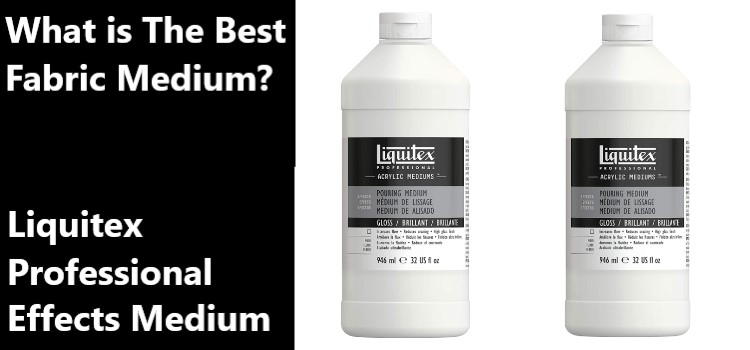
Worried about the flexibility of the fabric after dyeing? Liquitex Professional Effects Medium retains the softness. The material will feel the same as it did before the application. The paint bleeding is at a minimum.
Many fabric paints do not hold on to washing well, but that’s not the case for paints made with this product. The color will remain unscathed after washing.
Where To Buy Fabric Medium?
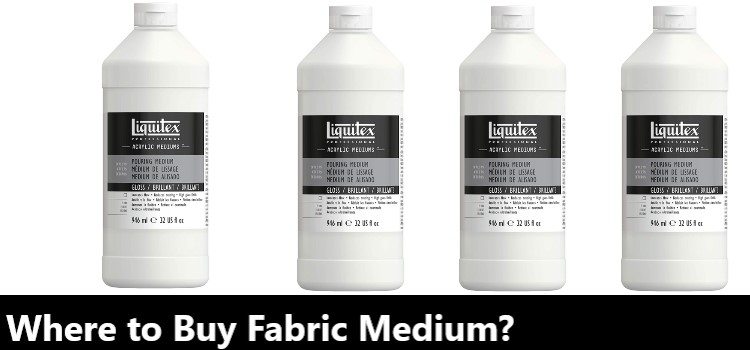
You can find fabric mediums on sale in both brick-and-mortar and online shops. If you are searching for fabric mediums online, you will find a lot of them on Amazon and Blick. Check manufacturer websites like Liquitex and Deco Art. But you are likely to get the best deals on Amazon.
Fabric Medium Substitute
You can make do with diluted glycerine if you don’t have any fabric medium. The fabric medium works as an adhesive to make the color last longer on textiles. Also, it keeps the paint pliable and helps it disperse across the surface more evenly. You can achieve that with a water-glycerine mixture.
Can You Use Fabric Softener Instead of Fabric Medium?
Let’s look into what fabric medium and softener do to answer this question correctly. Why do you need fabric medium? After mixing it with acrylic paint, you get the ideal paint consistency for fabric application.
Since textile fibers are supple, they don’t adhere to thick paint. That’s why you must thin out the paint beforehand.
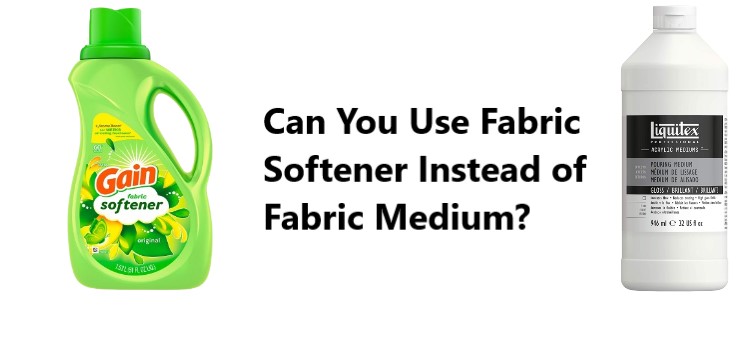
As the name implies, fabric softener gives your clothes a smooth and silky feel. I will not discuss in detail how fabric softeners work out.
But I will highlight the part relevant to answering whether or not fabric softeners can be used as a fabric medium. So, what exactly are we looking for?
Most modern fabric softener formulas are rich in cationic surfactants. Surfactants reduce the surface tension between two liquids. That means the presence of surfactant makes it easier for two liquids to mix.
Since fabric softeners have surfactants, they can make it easier for acrylic paint to combine with water. In other words, fabric softeners can help to thin acrylic paint.
So, yes, you can use fabric softener instead of fabric medium. But, will it do as good of a job or work even better? No, it won’t. Fabric mediums will be more effective in diluting acrylic paint, and they will produce more long-lasting results than fabric softeners.
Therefore, only consider fabric softener for thinning acrylic paint when you don’t have access to fabric medium.
Can I Use A Pouring Medium Instead Of A Fabric Medium?
An acrylic paint pouring medium is a liquid additive that alters the paint’s consistency and allows it to more easily spread over the canvas.
It both thins out your paint and binds the pigment together. Pouring medium not only makes it easier to run the paint out of the can, but it’s also instrumental in pulling off some incredible painting patterns.

But can you use it as an alternative to fabric medium? Since it’s an acrylic paint thinner, a pouring medium should work just as fine as a fabric medium, right?
However, that’s not the case, unfortunately. Thinning out the paint is not the only task a fabric medium does. There are many other factors involved that make pouring mediums unusable for making fabric paint.
You will have to contemplate the long-term effects. Fabric paints made with fabric mediums bind with fabric fibers better. It also makes the finish wash friendly, which you can’t guarantee for pouring medium paints.
Since pouring mediums were not made with fabric application in mind, they can’t replicate the results delivered by fabric mediums.
How To Make Fabric Medium?
Make your own fabric medium if you don’t already have one on hand. Just three everyday items like vinegar, water, and glycerine are all you need to develop a homemade fabric medium.
The medium you can make from the mixture of these three ingredients can turn acrylic paints into flexible and long-lasting fabric colorants.
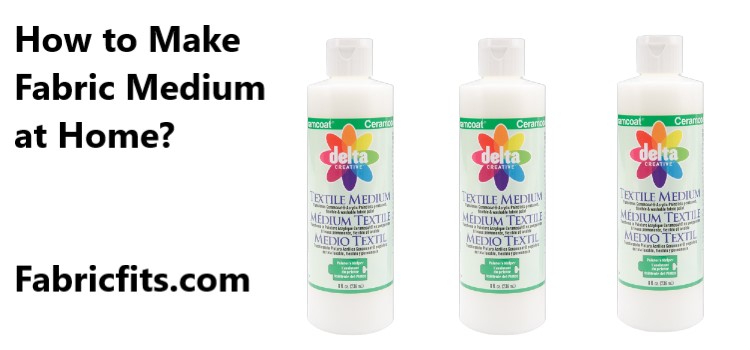
You undoubtedly already have white vinegar in your home, but glycerin might be harder to come by. Glycerine consists of soybean, palm, and coconut oils. Because of all the natural oils present in it, glycerine has excellent skincare properties.
You can find glycerine in the health and beauty aisles of most supermarkets, drug stores, and department stores.
Half of the mixture is water. The rest is equal amounts of vinegar and glycerine. To be more precise, add 25% vinegar and 25% glycerine to 50% water. The opaque liquid you will get afterward should work perfectly as a fabric medium.
We will go far so as to say that this homemade blend will outperform many commercial fabric mediums available in the market.
If you feel the acrylic paint is thinning out too much using the aforementioned formula, you can try a thinner fabric medium. In that case, I will recommend not using any white vinegar. You will need the glycerine to maintain the required consistency.
If you only use water, it will dilute the paint too much. Use an 85% water-15% glycerine solution instead.
How To Make Fabric Medium Without Glycerine
Glycerine is often the go-to ingredient for making homemade fabric mediums because of its ideal viscosity. When painting on fabric, glycerin is frequently the best medium to use when doing it yourself.
Still, it’s understandable if you don’t want to spend the money on a whole bottle of glycerin for this single purpose.
While glycerine is an effective component, it’s not a fabric medium essential. The combination of liquid glue and shaving cream makes a great fabric medium.
The best-suited types of glue for making fabric mediums are the ones that dry transparent and don’t have unwanted additives. You should also use white shaving cream so that you don’t unintentionally taint the color.
Shaving foam is mostly used to make marbled effects on paper in a crafts workshop. However, we will use it to deliver the thickness required for making a working fabric medium.
The glue, on the other hand, will provide the necessary level of adhesion for the color to stay on the fabric. Glycerine allows for both of these properties.
Combine the paint, glue, and shaving cream in a ratio of 1:3:1. This homemade medium will be thicker than most store-bought ones.
Therefore, its effectiveness will be somewhat limited. There shouldn’t be any problems with absorption into the cloth, while it might not be ideal for creating designs with incredibly tiny details.
After you apply the paint and medium mixture, wait before it gets totally dry. The next step is to heat the paint with a dry iron to set it in place. Skipping this particular step will not be a great idea as it will keep the colors noticeable over time.
Since the medium might get thicker than you would want, the heat treatment helps you achieve the best fabric coloring results.
DIY Fabric Medium For Latex
Latex paints are water-based paints that are often used in furniture upholstery. They are not as thick as acrylic paints. But, you still have to thin them before putting them into any form of textile.
You can prepare a 1:1:2 vinegar, glycerine, and water solution as a latex paint fabric medium. It’ll be enough for readying latex paints for applying on fabric.
How To Use Fabric Medium: Step-by-Step Guide
Using a suitable fabric medium is the most important thing to do while painting textiles with acrylic paint. If you properly follow the guidelines I laid below, you can stay assured that the fabric colors will not fade away anytime soon.
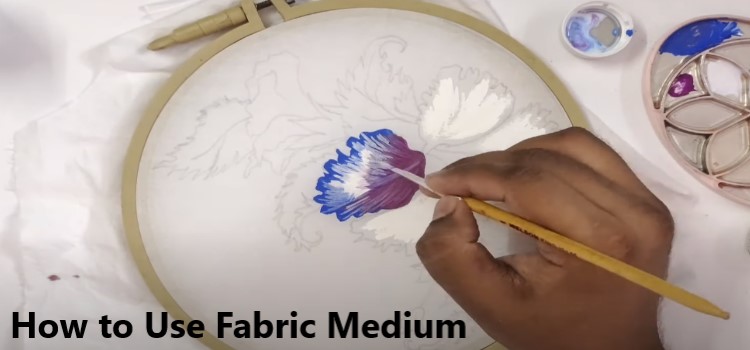
Step 1. Get The Fabric Ready
Wash the fabrics well before painting them. Clean cloth improves paint adhesion. Liquid fabric softeners can leave a residue that prevents the paint from sticking.
So, try not to use those. Painting directly on clean fabric is possible, but I recommend lightly sanding the cloth beforehand to stimulate the fibers and make them more adhesive.
You can get better results while painting on damp fabric because the paint will penetrate deeper into the fibers.
Careful, though, since too much moisture on the fabric might dilute the color or lead to color bleeding. So, don’t dip the cloth in a bucket of water. Just wet lightly in water.
Step 2. Mix The Paint With The Medium
Now, you should mix the paint with the medium. You might feel a bit nervous if you never did it before, but in reality, it’s quite a straightforward process. I would say botching would be a harder challenge than getting it right!
All you have to do is pick the acrylic paint color and mix two parts of the paint with one part of the medium.
However, the ratio can change if you are using commercial fabric mediums. Check the labels to know for sure what the best combination is.
Do not forget that the medium and paint must mix together. Applying separate coats of them will not work. Once the medium dilutes the acrylic paint, you can clear it for application.
Step 3. Prepare The Design
Don’t put the mixture on the fabric before you finish the design. Draw the pattern on the fabric with a fabric marker. Use a marker color that you can easily see on the fabric.
If you don’t sketch the design first, it will be difficult for you to follow where to paint. So, it’s important to finish your sketch first.
Step 4. Seal The Paint
After you put the paint on, you might need to seal it with heat treatment. You don’t have to do this for all mediums, but if you go through the trouble, you can expect the colors to look brighter and stay on longer. Wait till the cloth becomes dry.
Then, run a heated iron over the painted fabric area. Little to no moisture is the best for this stage.
Final Words
You might come across some videos on YouTube showing how to use acrylic paint on fabric without any medium whatsoever.
While the videos show how easy it is to not go through the hassle of using mediums, they conveniently refrain from discussing how the clothes fare over time.
Untreated acrylic paint on fabrics tends to within a few days. Also, the clothes will have little to no flexibility. They would be so stiff that you would not want to wear them.
So, it would be best to use fabric-specified paint to dye clothes. You can buy them or choose to make them on your own with acrylic paint and, of course, a fitting fabric medium.

Could you substitute in Xanthan gum instead of glycerin when making fabric textile medium?
I am a little confused by the following statement. “After you apply the paint and medium mixture, wait before it gets totally dry.” Did you mean to say to wait UNTIL it gets totally dry?
I’m painting lampshades. The first coat on maroon with a white mixture is going to need many more coats. Not sure how I’m going to set the paint. What does this mean? : “Untreated acrylic paint on fabrics tends to within a few days.”